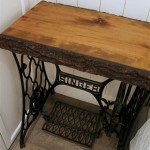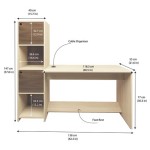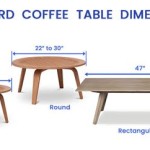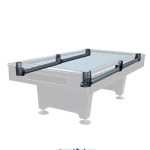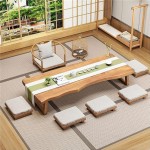```html
Dining Table Ideas For Small Rooms
Maximizing space in small homes often requires creative solutions, particularly when it comes to furnishing. The dining area, a central point for meals and gatherings, can present a significant challenge. Choosing the right dining table for a small room necessitates careful consideration of size, shape, material, and functionality. This article explores various dining table ideas tailored for compact spaces, providing insights into optimizing your dining area without sacrificing style or practicality.
Choosing the Right Size and Shape
Selecting the appropriate size and shape for a dining table in a small room is crucial. An oversized table can overwhelm the space, making it feel cramped and hindering movement. Conversely, a table that is too small may not adequately serve the needs of the household. A general guideline is to leave at least 30 inches of space between the edge of the table and any wall or other furniture. This allows for comfortable seating and passage around the table.
Rectangular tables are a common choice, but they can sometimes be less efficient in small spaces. Their linear design can occupy a significant amount of floor area, potentially blocking walkways. Round or oval tables, on the other hand, promote better traffic flow. The absence of sharp corners makes them less obstructive and allows for more seating in a smaller footprint. Square tables offer a balance, providing a defined space while maintaining a compact size.
Consider the typical number of people who will be using the table regularly. A small round table seating two to four people might suffice for a single individual or a couple. Families or those who frequently entertain may require a table that can accommodate more guests. In such cases, extendable tables offer a versatile solution, allowing you to increase the table size as needed while maintaining a smaller footprint for everyday use.
Before purchasing a dining table, accurately measure the designated dining area. Map out the dimensions on the floor using tape or paper to visualize the table's placement and ensure sufficient clearance. This proactive approach can prevent costly mistakes and ensure a harmonious fit within the room.
Exploring Space-Saving Designs and Functionality
Beyond size and shape, innovative designs can significantly enhance the functionality and space-saving potential of a dining table. Drop-leaf tables, for example, feature hinged leaves that can be folded down when not in use, reducing the overall table size. This design is particularly useful for those who require a larger table occasionally but prefer a smaller, less obtrusive option on a daily basis.
Folding tables offer another space-saving solution, allowing the table to be completely collapsed and stored away when not in use. Wall-mounted folding tables are ideal for extremely tight spaces, providing a temporary dining surface that can be easily folded away after meals. These tables are often paired with folding chairs, further maximizing space efficiency.
Tables with built-in storage can also be beneficial in small rooms, providing a convenient place to store placemats, napkins, or other dining accessories. Some tables even incorporate drawers or shelves underneath the tabletop, maximizing storage potential without increasing the table's footprint. Consider tables with hidden compartments or integrated seating to further optimize space utilization.
Consider the placement of the table in relation to other furniture. Multipurpose furniture can contribute to space saving. For example, consider a banquette or bench positioned against a wall. This seating arrangement can maximize seating capacity while minimizing the overall footprint of the dining area. Integrating the dining table with a kitchen island or breakfast bar can also create a seamless and efficient dining space.
Material Selection and Visual Impact
The material of the dining table can significantly impact the overall aesthetic and feel of a small room. Glass-top tables create an illusion of spaciousness by allowing light to pass through and minimizing visual obstruction. Their transparent nature makes them a suitable choice for small spaces, as they do not dominate the room.
Light-colored wood or metal tables can also brighten up a small room and create a more airy atmosphere. Avoid dark, heavy materials that can make the space feel smaller and more enclosed. Opt for materials with a smooth, reflective surface to enhance the sense of light and space.
The choice of chairs can also contribute to the overall visual impact of the dining area. Consider chairs with a slim profile and open back design to minimize visual clutter. Clear acrylic chairs are a popular choice for small spaces, as they are virtually invisible and do not obstruct the view. Stackable chairs are also a practical option, allowing you to easily store extra seating when not in use.
Coordinate the table and chair materials and colors with the overall décor of the room. A cohesive design scheme can create a sense of harmony and spaciousness. Avoid clashing colors or patterns that can overwhelm the space. Consider adding a rug underneath the dining table to define the dining area and add visual interest. Choose a rug that is large enough to accommodate the table and chairs, with at least 24 inches of extra rug extending beyond the chairs on all sides.
Careful consideration of lighting can also enhance the dining experience in a small room. Install a pendant light above the dining table to create a focal point and provide adequate illumination. Ensure that the lighting is not too bright or harsh, as this can make the space feel uncomfortable. Dimmable lights offer flexibility, allowing you to adjust the lighting to suit different occasions.
Wall décor can also contribute to the overall ambience of the dining area. Hang a large mirror on the wall to reflect light and create the illusion of more space. Choose artwork that complements the overall décor and adds visual interest. Avoid cluttering the walls with too many small items, as this can make the space feel cluttered and overwhelming.
Maintaining a clean and organized dining area is essential for maximizing space in a small room. Avoid leaving clutter on the table or surrounding surfaces. Store dining accessories in cabinets or drawers to keep them out of sight. Regularly clean the table and chairs to maintain a fresh and inviting atmosphere.
Ultimately, selecting a dining table for a small room requires a balance of functionality, aesthetics, and space-saving design. By carefully considering the size, shape, material, and features of the table, you can create a dining area that is both stylish and practical, enhancing the overall living experience in your small home.
```
48 Brilliant Small Apartment Ideas For Space Saving Matchness Com Dining Room Table Living Combo

15 Small Dining Room Ideas How To Decorate Your

Small Dining Room Ideas Space Rooms

Small Dining Rooms That Save Up On Space Room Decor Elegant

Small Space Dining Ideas That Maximize Every Inch

Dining Room Designs For Small Spaces Designcafe

13 Small Dining Room Ideas And Decorating Tricks

Maximize Your Space Innovative Small Dining Room Ideas For Apartments Oppein

27 Genius Dining Area Ideas For Tiny Apartments

20 Affordable Apartment Dining Room Decor Ideas Adria

